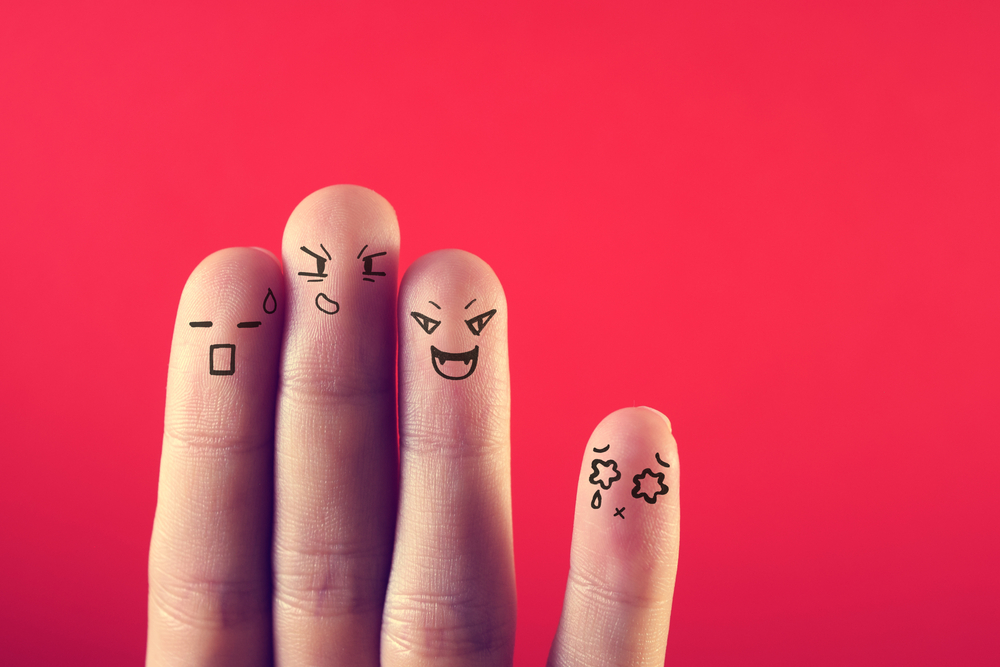One teen remembers the pushing, the physical threats, and intimidation from a school bully during middle school. He developed severe depression, going from a “semi-loud guy” to a quiet one. He hoped for a fresh start at a new high school, only to find his bully had chosen the same school and began spreading malicious rumors about him. It was a self-described hell, which he described on the Pacer Center’s Teens Against Bullying website, where hundreds of other teens share their own accounts of bullying.
The National Center for Education Statistics and Bureau of Justice estimates that about 20% of students ages 12 to 18 experience bullying nationwide. The effects of bullying — whether physical, verbal, or relational — are far reaching. October is National Bullying Prevention Month, an opportunity to raise awareness and provide tools for change. That includes broadening the conversation by discussing the impact on victims’ mental health.
Bullying Defined
Bullying is often thought of as physical, like pushing a student against a locker or engaging in a fight. The definition is actually broader. In 2014, the Centers for Disease Control and Department of Education released the first uniform definition of bullying to serve as a foundation for future federal research. Key aspects include:
- Unwanted aggressive behavior
- Observed or perceived power imbalance
- Repetition of behaviors or high likelihood of repetition
These episodes can happen both in person or online, which is considered cyberbulling. With young people continuously connected to the internet, social media sites, and texting, it opens additional channels for anonymous and consistent bullying that poses new challenges for victims and advocates. Digital communication is both permanently available and persistent, and it’s also harder to notice by trusted adults when it takes place virtually.
Bullying’s Impact on Self-Esteem
Regardless of how bullying occurs, victims generally experience a loss in overall self-esteem. Repeated episodes of taunting and harassment can break a victim’s confidence, even if they innately know that the hurtful words and insults are not true. This can lead them to feel insecure and to question their own worth and value. These are heavy emotions for young people, especially, to feel and navigate.
In the early teen, or late pre-teen, years, children enter puberty and often switch schools. It’s a transition where children can struggle to fit in and navigate new social dynamics. Physically, they’re also facing many changes. It’s likely no surprise that most bullying happens in middle school, when both bullies and victims are experiencing these pivotal changes, which can impact self-esteem.
Over the course of time, bullying encounters can cause some victims to become submissive, making them less willing to defend themselves. Even more dangerous, bullying can gradually shift the victim’s mindset so drastically that their low-self esteem convinces them that there is something wrong with them, which fuels the unbalanced relationship.
Low self-esteem can also lead victims to feel overly self-conscious. One victim who shared her story on the Pacer Center’s Teens Against Bullying website said she was already self-conscious about how she looked, but when a former friend began physically, emotionally, and verbally bullying her, she felt more down than ever before. “She’s the reason I started self-harming, and she’s the reason I cried almost every night,” she posted.
Bullying’s Impact on Anxiety
A study published in JAMA Psychiatry found that children who are bullied are also at an increased risk of developing anxiety disorders when they become adults. The most common anxiety disorders from bullying include post-traumatic stress disorder (PTSD), generalized anxiety disorder (GAD), panic attacks, and social anxiety disorder.
PTSD is often associated with traumatic events like war, trauma, or severe accidents, but it can also occur with abuse or bullying. For children, the symptoms can include nightmares or withdrawing from others. Bullying victims struggling with GAD may consistently feel that something bad is going to happen since they never know when or how their bully will attack. They can also experience insomnia, restlessness, or fatigue.
Panic attacks trouble many victims, causing sweating or rapid heartbeat. The unexpected attacks may lead them to stop participating in activities or going out. Feeling debilitating self-consciousness about everyday situations is a sign of social anxiety disorder. Bullying victims often feel like others will judge or ridicule them, much as their bully has.
That was the case for Charlotte. She mostly kept to herself, but when she spoke with others at school, she stumbled over her words. She worried about tripping in the hallway with her stack of books, and a group of students took advantage of her worry and spilled water that she tripped on, sending her into a panic attack. When they lobbed jeers at her, she ran away and told her parents she needed to switch schools. The anxiety was just too much.
Bullying’s Impact on Depression
Research from the National Institute of Child Health and Human Development also shows that those who bully others, those who are bullied, and those who bully and are bullied are at increased risk for depression. Symptoms of depression can include:
- Mood changes: feelings of sadness, low energy
- Decreased appetite
- Inability to enjoy activities one once did
- Heightened fatigue
- Trouble sleeping or sleeping excessively
- Weight loss or noticeable weight gain
- Pacing, difficulty thinking clearly
- Feelings of low-self esteem and hopelessness
- Suicidal ideation
Research published in the Journal of Adolescent Health describes how cyberbulling victims are at a higher risk for depression — even more so than those who bully them. According to study authors:
“Notably, cyber victims reported higher depression than cyber bullies or bully-victims, which was not found in any other form of bullying…unlike traditional bullying which usually involves a face-to-face confrontation, cyber victims may not see or identify their harasser; as such, cyber victims may be more likely to feel isolated, dehumanized or helpless at the time of the attack,” they wrote.
The topic of death by suicide often enters the conversation about bullying. Since major depression increases the suicide risk compared to people without depression, the media often links bullying directly to suicide. Research, however, shows that most young people who are bullied do not have thoughts of suicide or engage in suicidal behaviors. Many factors impact suicide risk, including past trauma, ethnicity, and sexual orientation — but bullying can worsen these risk factors.
Bullying is an unfortunate reality for many in adolescence, and the effects are long lasting. This October, we recognize the impact on the whole person, and the need to stand up for change. For more resources to help prevent bullying and promote kindness, acceptance, and inclusion for all, visit www.pacer.org.
This article was originally published on Talkspace.
Follow us here and subscribe here for all the latest news on how you can keep Thriving.
Stay up to date or catch-up on all our podcasts with Arianna Huffington here.


